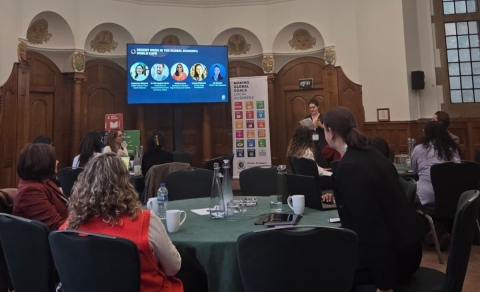Statement delivered by Marcos Neto at the first session of the Preparatory Committee for the Third International Conference on Landlocked Developing Countries (LLDC3), UN HQ, New York.
Landlocked Developing Countries have potential for transformative change
05 FEBRUARY, 2024

Excellencies,
Let me start by thanking the organizers of this session for inviting UNDP.
Landlocked Developing Countries face both challenges and enormous potential for transformative change.
Let me start with some of the challenges. We have seen reversals in SDGs achievement in LLDCs and these reflect both a lack of resilience to shocks, but also structural features that slow progress across the board.
- LLDCs pay a higher premium to access global markets because of the lack of direct territorial access to the sea. This limited transport connectivity causes lower levels of trade compared to the rest of the world.
- Access to electricity is below the world average and the costs of ICT services remain high.
- Development is hindered by the severe infrastructure financing deficits.
- LLDCs also face rising risk of debt distress, elevated trade costs, rising inflation, energy and food prices as well as effects of climate change.
The last five years of the Vienna Plan of Action, in fact, saw a reversal in development gains, following COVID-19 pandemic, disruption of global supply chains and international trade.
But behind these challenges, enormous opportunities stand. UNDP is partnering with all 32 LLDCs totaling a population of over 450 million people.
Let me share a few examples of UNDP’s work:
- The Africa Minigrid Program – works with 21 countries in Sub-Saharan Africa to promote investments in solar minigrids which are expected to bring low-cost electricity to 265 million people by 2030.
- The ABADEI programme in Afghanistan offers financing and capacity building to 75,000 women-led SMEs, and organization of women-only market days as safe spaces to sell their products and connect to supply chains.
- In Paraguay, the programme ‘Zero Emission Public Transport in the Asuncion’s Metropolitan Area’ is upscaling urban transport decarbonization. In 5 years, it is expected to raise from 548 to 5000 the electric vehicle fleet in the country.
- In Ethiopia, the GEF-funded project created 43,886 temporary jobs as part of the Urban Greenery Initiative, and 11,903 temporary jobs in waste segregation and street cleaning.
Currently, we are reflecting on our contribution to the goals of the Vienna Plan of Action, in collaboration with governments and partners, to extract valuable lessons and inform successful strategies for the future.
We look forward to the Third UN Conference on LLDCs in Kigali later this year. UNDP remains committed to continuing working with partner LLDCs towards sustainable development.
I would like to extend our best wishes for a successful outcome of the negotiations to the Co-Chairs of the Prep Committee – the Governments of Austria and Mongolia – and to all involved.
Thank you.












